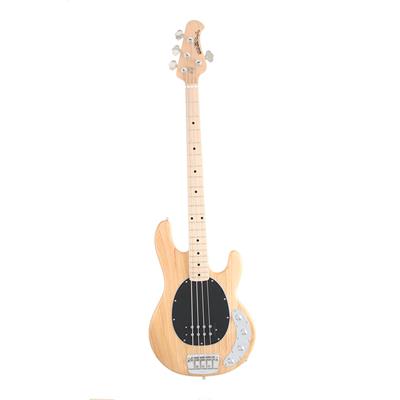With the plethora of different pedals and effects, it is hard to figure out what is worth buying. We spend so much time and money on brand-new devices that sometimes we wonder, do we actually need them? But then we dive into our performance, start concentrating on perfecting our tones and all those doubts start fading away.
These suspicions are especially relevant when it comes to volume pedals. At first glance, they do not offer much, but when you plug them in, they do make a lot of difference. In order to choose the best volume pedals, you have to consider many factors. This article will guide you through most of them and help you make the final decision.
What’s The Best Volume Pedal
| Image | Amplifier Model | ||
|---|---|---|---|
 | Mission Engineering VM-PRO Volume Pedal Pro |  (5 / 5) (5 / 5) | Check on Amazon |
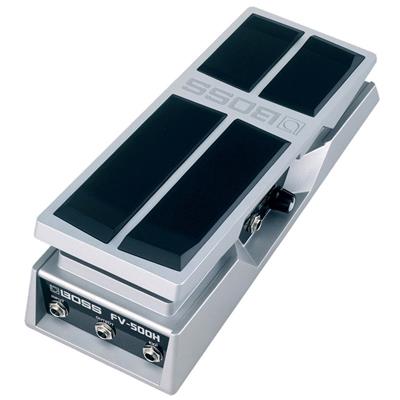 | Boss FV-500H High ImpedanceVolume Pedal |  (4.9 / 5) (4.9 / 5) | Check on Amazon |
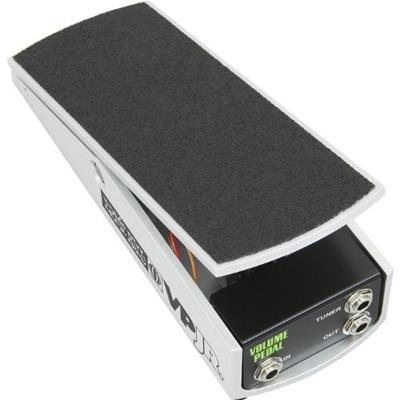 | Ernie Ball VP Jr. P06180 250K Potentiometer for Passive Electronics |  (4.9 / 5) (4.9 / 5) | Check on Amazon |
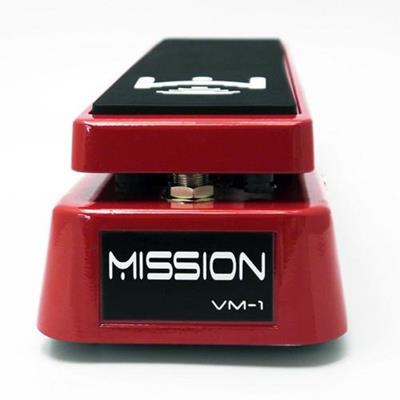 | Mission Engineering VM-1 Volume Pedal |  (4.9 / 5) (4.9 / 5) | Check on Amazon |
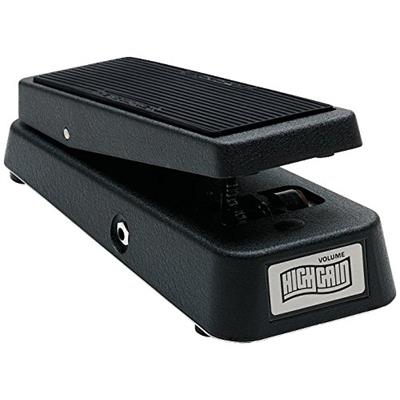 | Dunlop GCB80 High Gain Volume Pedal |  (4.9 / 5) (4.9 / 5) | Check on Amazon |
 | Fender Expression Pedal for Guitar |  (4.8 / 5) (4.8 / 5) | Check on Amazon |
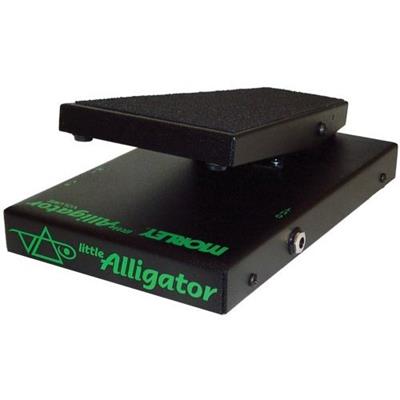 | Morley PLA Steve Vai Little Alligator Optical Volume Pedal |  (4.8 / 5) (4.8 / 5) | Check on Amazon |
 | Valeton EP-1 Active Volume Pedal |  (4.7 / 5) (4.7 / 5) | Check on Amazon |
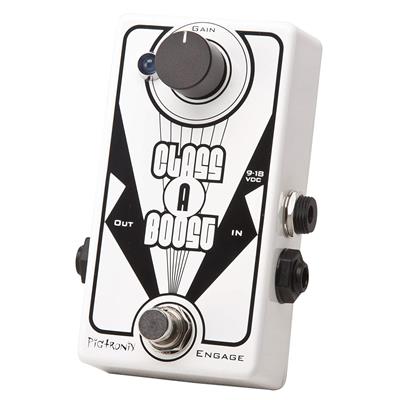 | Pigtronix BST Guitar Volume Pedal |  (4.7 / 5) (4.7 / 5) | Check on Amazon |
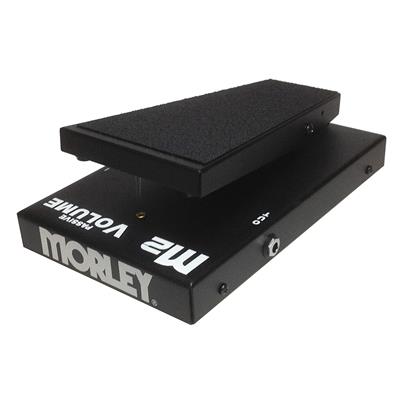 | Morley M2 Passive Volume Guitar Effects Pedal |  (4.7 / 5) (4.7 / 5) | Check on Amazon |
Mission Engineering VM-PRO Volume Pedal Pro

If you are a sophisticated person and are looking for a volume pedal matching your character Mission Engineering VM-PRO is what you need. Unlike other pedals, VM-Pro is comfortable to use, it has a TRS-type output that can be connected to the tuner and an amplifier at the same time. Moreover, this pedal has a buffer and line driver, which clears up sounds and prevents tone-sucking and mismatching. With a sparkling switch, this pedal is effective on long cables as well. You can easily switch pedals on active or passive pickups. VM-Pro is incredibly versatile as it works flawlessly with both electric and acoustic instruments. To put it simply, if you’re seeking a pedal with top-notch configuration and excellent compatibility, VM-Pro is the perfect choice.
Pros:
- Works for wide range of instruments
- Flexible
- High quality buffer
- Sparkle switch
Cons:
- Needs some extra devices for several features
Boss FV-500H High ImpedanceVolume Pedal

When you want to look like a rock star with a metallic pedal, Boss FV-500H is your best option. This is a sturdy pedal with awesome features. Boss FV-500H is equipped with an aluminum case and rubber on the top to avoid slips during the performance. It is a mono device, which means you can plug in only one instrument. One more feature that FV-500H offers is an expression output that can control the sound of other devices you use. Additionally, this pedal enables you to effortlessly tune your guitar, making it a valuable asset for those seeking constant instrument precision. The FV-500H boasts a power-saving feature, eliminating the need for a power supply. Contrary to its appearance, the sound it produces is remarkably smooth and crystal-clear. With a perfect blend of style and efficiency, this pedal is an ideal choice for those who prioritize ease of use and top-notch performance. Your search for the ultimate pedal ends here.
Pros:
- Strong
- Reliable device
- Two control switches
- Tuner
Cons:
- Is used for only one instrument
- Takes up a lot of space on the pedal board
Ernie Ball VP Jr. P06180 250K Potentiometer for Passive Electronics

Too many stompboxes on the wire and you want something taking up little space? Ernie Ball VP Jr. is the perfect choice because it’s one of the best volume pedals. Its compact size makes the use of a pedal even more convenient. It has a 250k potentiometer, which works just great for passive electronics and helps you create more authentic dynamics of your performance. The pedal has a micro taper switch that provides higher and more dramatic sounds. You do not have to utilize a guitar volume knob all the time, VP Jr. does the job itself. By using this pedal you actually control the volume and clarity of other pedals, delivering perfect tones. In addition to these features, this pedal also has a tuner output that allows you to connect a tuner and tune your signal without any tonal loss.
Pros:
- Smooth sound
- Micro taper switch to alter sound
- Compact design
- Affordable
Cons:
- Easy to break during use
Mission Engineering VM-1 Volume Pedal

Mission Engineering VM-1 is a classy, cool device that is extremely easy to use. Mission Engineering took the staple and turned it into a highly effective volume pedal. VM-1 is a mono pedal, with single input and output. In addition, it has a tuner jack, where you can plug the tuner and keep your instrument in shape during the performance. With 500k impedance VM-1 is perfect for passive electronics, potentiometer has zero maintenance, which means this pedal does not need any power supply. Moreover, unlike other devices (that may cause tone suck with lower notes), Vm-1 has a mute switch, which avoids the problem by isolating primary output for silent tuning. This is one of the most precise pedals you can find. It offers quality, high maintenance, durability, and clarity of sound.
Pros:
- Easy to use
- High maintenance
- Offers many options
Cons:
- Pricey
- A bit heavy
Dunlop GCB80 High Gain Volume Pedal

If you are looking for something simple yet powerful, Dunlop High Gain will be the best choice for you. At first glance, it will remind you of the legendary Cry Baby wah pedal due to their similarity in design. Just like many other volume pedals, this one has a potentiometer, so you can forget about any power supplies and 9V batteries. It is important to note that this pedal is not actually suited for high-gain genres. The name simply indicates that GCB80 is meant for guitars rather than keyboards. When it comes to performance, the sound it produces is quite smooth. You can even create swells with it without changing the original tone. Not to mention that this bad boy is sturdy as hell, you can drop the thing from the high building and it will still be good to go! All in all, High Gain is quite easy to use and will never disappoint you. How can you say no to this one?!
Pros:
- Extremely durable
- Smooth operation
- Does not need a power supply
- Reliable
Cons:
- The pots (as with many potentiometers) might wear out after a while
- You cannot adjust the tension.
Fender Expression Pedal for Guitar
| Features: |  |
| Controls: |  |
| Sound: |  |
| Value: |  |
| Average: |  |

I’m sure you know by now that expression and volume pedals usually come in a single package a.k.a. you get both of them more often than not. Such a design is nothing but a virtue as you get the chance to enjoy the benefits of both units without purchasing separate pedals. Fender EXP-1 is something you’ll enjoy a great deal if simplicity is what you’re looking for. This puppy is compatible with Mustang GT, III, IV, and V amplifiers and can also be employed with Mustang Floor multi-effects unit. Though it’s great to have a dedicated pedal for your gear, it can be a bit limiting – you won’t be able to enjoy it unless you own one of those devices. But if you do own them, you’re in for a treat. EXP-1 can control the volume or any settings that you want to switch with your feet. You can do subtle volume swells with it, and it will easily turn into a wah pedal as well. Switching between volume and expression modes is a piece of cake and you can distinguish between them via complementary LED lights. The only thing that would make it even better is the accessibility – we don’t want anyone to be left out, do we?
Pros:
- Has various applications
- Really easy to use (once you get the hang of the Mustang)
- Metal construction
Cons:
- Can only be used with specific gear
Morley PLA Steve Vai Little Alligator Optical Volume Pedal

Right off the bat, I can say that this pedal is the most elegant thing I have ever seen in my life. It captured me from the very first glance. And fortunately, it did not leave me disappointed after plugging in. Little Alligator was designed by Steve Vai, which means it features everything he wanted to see in a volume pedal. It has electro-optical circuitry, getting worn-out pots out of the way. You can adjust the volume of the device (when set to its lowest) with the Minimum Volume knob. Do not get overboard and stomp as hard as you can, because it may result in uneven sound. As for the performance, this Little Alligator does not alter your tones even when plugged in with other effects. In spite of being Steve Vai’s signature pedal, it is not overpriced and is quite a good bang for the buck.
Pros:
- Very durable
- Good for swell
- Precise
Cons:
- Not for heavy stomping
- Takes up space on the pedal board
Valeton EP-1 Active Volume Pedal

If you are someone who is always looking for a good deal and prefers two-in-one devices, then you have found your best mate, my friend. The Valeton EP-1 combines volume and wah pedals and leaves room for great versatility. You can switch between the two with a footswitch. Perhaps the Vintage Wah mode is not as dynamic as Cry Baby, but it still creates quite a decent sound. When you go from Wah to Active Volume, it lights up the LEDs, so that you know what you are doing. Valeton EP-1 comes with a Taper Volume Control, which allows you to swell between different levels smoothly and effortlessly. Apart from being very versatile, this pedal is also very durable, compact, and lightweight. In short, Veleton EP-1 is the best volume wah combo pedal on the market.
Pros:
- Great sound
- Saves the space on your pedal board
- Can be powered by 9V DC supply
- Offers additional wah effect
Cons:
- Not very stable (needs some rubber pads to stay in place)
- Made out of plastic
Pigtronix BST Guitar Volume Pedal

Pigtronix BST is not that renowned among musicians, but this does not mean it is bad. You will definitely come across some controversy about this pedal, but I think if you use it correctly, it will do what it is supposed to. Unlike other volume pedals we have reviewed in this article, Pigtronix BST has a knob, which allows you to control the gain of your tones. The LED light will tell you if the pedal is operating or not. Additionally, it comes with a J-FET instrument preamp, allowing you to apply up to 20dB of clean boost to your sound. This pedal can be powered with an 18V power supply. Pigtronix BST is a very good choice due to its simplicity and the quality of the sound.
Pros:
- Produces transparent sound
- Does not alter the tone
- Easy to use
- Good for boosting as well
Cons:
- Not as powerful as some other pedals
Morley M2 Passive Volume Guitar Effects Pedal

Morley M2 Passive Volume is very flexible since it can be plugged in with any instrument. The first thing you notice when you open up the box is its size and design. This bad boy will definitely take up some space on your pedal board, but the ease of operation will convince you to plug it in. Morley M2 is a passive device, which means it does not require any power supplies. It comes with a simple taper control that will allow you to manage your volume and create swells simultaneously. The built quality is very nice and guarantees that this pedal will last you through a lifetime. Do not expect any fancy features or additional effects, M2 is definitely a one-trick pony, but the main thing is that it gets its prime job done.
Pros:
- Good quality
- Beautiful design
- Good for swells
- Smooth operation
Cons:
- Too big
- Taper is a bit stiff in upward position
What does a volume pedal do?
The capacities of the volume pedal are very easy to explain. It is the simplest concept of all. Basically, it does what your guitar volume control would do – increases and balances out the volume of your signal. It also allows you to create a dynamic yet clear tone. The fact that it is a pedal makes it easier to operate, since you can concentrate your hands on your instrument (this is the very difference between guitar volume controls and volume pedals). In addition, you can create swells by switching between different parameters of the volume. The majority of them can be used as expressions or boost pedals in order to define your sound even more. It is true, though, that the difference it makes to your tone is not that audible, but when you spend years playing and perfecting your music, the volume pedal will be something you will use on a daily basis. The words that describe this pedal the most are accuracy, precision, and clarity. If you are a perfectionist, you cannot skip this pedal in your signal chain.
The difference between Active and Passive volume pedals
Try searching for a volume pedal and the first words that will pop up will be passive and active. If you are a newbie in music industry and have just started experimenting with various devices, you might not know what these words mean. I will explain the difference between the two briefly so that you have a core understanding of the pedals you purchase.
Passive Volume Pedals operate using potentiometers that are mechanically activated by pressing the footswitch. This means that they do not need any power supplies in order to operate. This saves you a lot of money spent on batteries and DC/AC adapters. You should remember that potentiometers utilize pots, which may wear out after a while. This will make your tone a bit odd-sounding, so make sure that you check on them from time to time. One more thing to keep in mind is that passive volume pedals are quite sensitive. You will receive different sounds depending on what instrument you use and where you place them in a signal chain. Volume pedals that have additional tuner outputs can be quite a headache since they might suck your tone. Nevertheless, most of the volume pedals on the market rely on potentiometers and are passive in nature. They will work great provided that you use them correctly.
Active Volume Pedals operate using power supplies, such as insertable batteries or adapters. They usually rely on electro-optical circuits that use sensors to identify the signal. They might consist of an amplifier circuit, which is typically utilized as a buffer, but can act as a booster or tuner isolator as well. The main value of this pedal is that it separates input and output sections. This way it makes sure that there is no signal loss when connected to a chain. What is more, active volume pedals last longer, because they do not use pots or any other parts that can be worn out. In that sense, they are more reliable and versatile.
What you choose between the two is completely up to you. It depends on your preferences and the instruments you use. Some of you may fall in love with active volume pedals due to their durability, while others might find passive volume pedals more convenient for their personal needs. Try both of them and the sound will dictate which is THE ONE.
Where should a volume pedal go in a signal chain
When it comes to assembling your signal chain, there are a lot of things to consider. The placement of each pedal will affect your sound. In this part of the article I will be talking about different ways of putting your volume pedal in your signal chain.
The first technique includes placing your volume pedal before overdrive and distortion. This way you can either increase or attenuate the effect. If you turn your volume pedal all the way up, the distortion applied to your signal will be very intense and defined. On the contrary, if you use lower settings, the overdrive will be subtler.
Now, if you put your volume pedal after the overdrive and distortion, you will be able to take full control of these effects. This means that you can either boost your sound even more or balance it out and remove the harshness. Volume pedals do this without adding color to the tone.
You can place your volume pedals before delays. This way you can reduce the volume of the signal and send the resulting tone to the delay pedals. The outcome of such placement is a more sustained sound, natural and organic swells as well as more defined delay effect.
Last but not least, volume pedals can go right at the end of your chain. In this case, they will shape the overall sound while maintaining all the overdrives, distortions, delays or any other effects that you have added to your sound. It can also act as a noise reducing tool when placed in this order.
No matter where you put your volume pedals, they will not suck your tone. Plus, they will keep the clarity and precision of the sound. And one more thing, these “rules” are not set in stone. You can (and should) experiment with different ways and techniques in order to create a perfect-sounding chain. These are just some suggestions based on the experience of a lot of musicians and what has worked for them. You have the freedom of deciding what will work for you.
What features should a volume pedal have?
If you ask me, volume pedals are the most straight-forward devices. They do what they are supposed to, but they do not usually have a lot of features to offer. Nevertheless, there are some of them that can be good addition to any volume pedal.
Some pedals come with a Minimum Volume knob, which lets you control the amount of output when your pedal is at its lowest value. This is a very handy feature, especially for those who want to achieve maximum precision in their tones.
Most of the volume pedals come with tapers, which are very sensitive to your touch. Being able to adjust their tension can change your game significantly. This allows you to modify the pressure you apply to your pedal and leaves room for heavy/slight stomping. Flexible tension adds a sense of individuality and tailors the pedal to your preferences.
Now, the tuner output can easily become a determinant factor when choosing the volume pedal. It lets you tune your instrument constantly without any fuss or head-wrecking. But be careful: some volume pedals with tuner outputs can suck your tone.
Finally, some volume pedals are combos, which means they offer much more than just controlling your volume. For example, Valeton EP-1 Active Volume Pedal can produce a wah effect and adjust your volume simultaneously. This adds more versatility to your sound and saves you some space on your pedal board (it is basically two pedals in one body).
Conclusion
When you play on the professional level, it is hard to skip through volume pedals. They provide a lot of control and make it easy to shape your sound. Their effect is not that noticeable, but if you compare the performance with a volume pedal to the one without it, you will see a significant difference. They offer hands-free operation, which is especially useful on stage. All things considered, volume pedal will improve your sound and add some precision to it. So, stop hesitating, consider all the information I have given you and get yourself the best volume pedal out there. Now is the time to shine!

